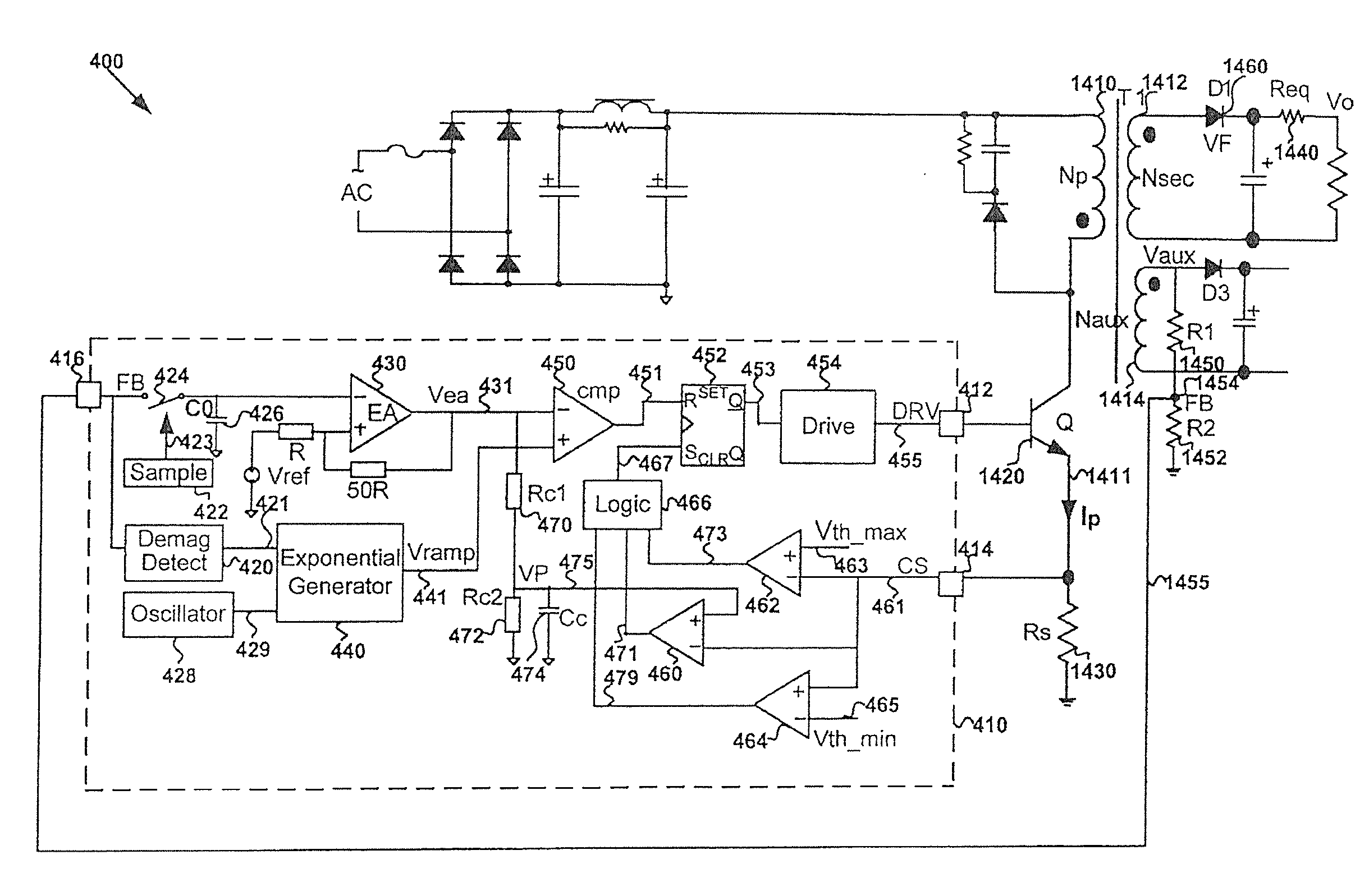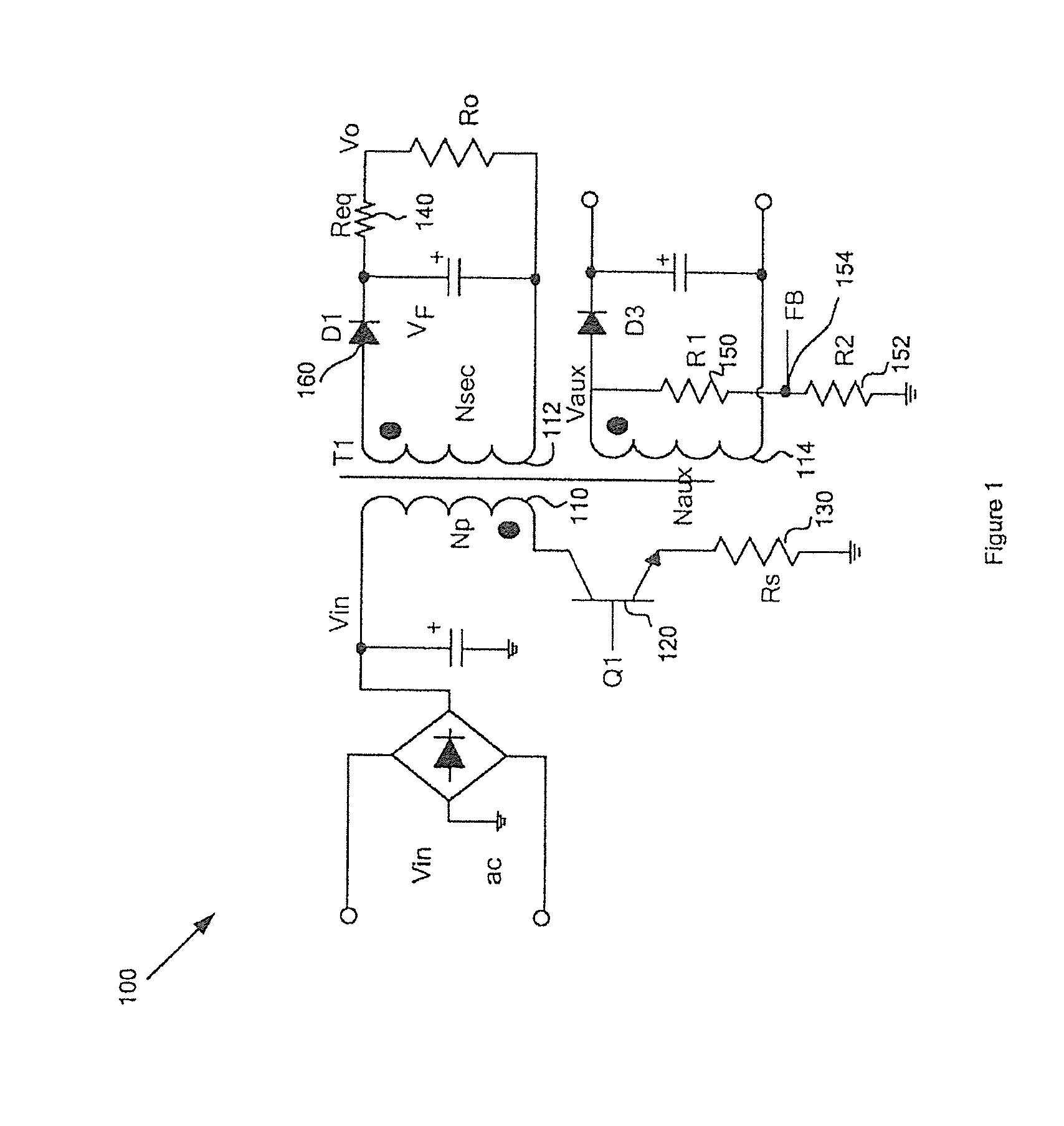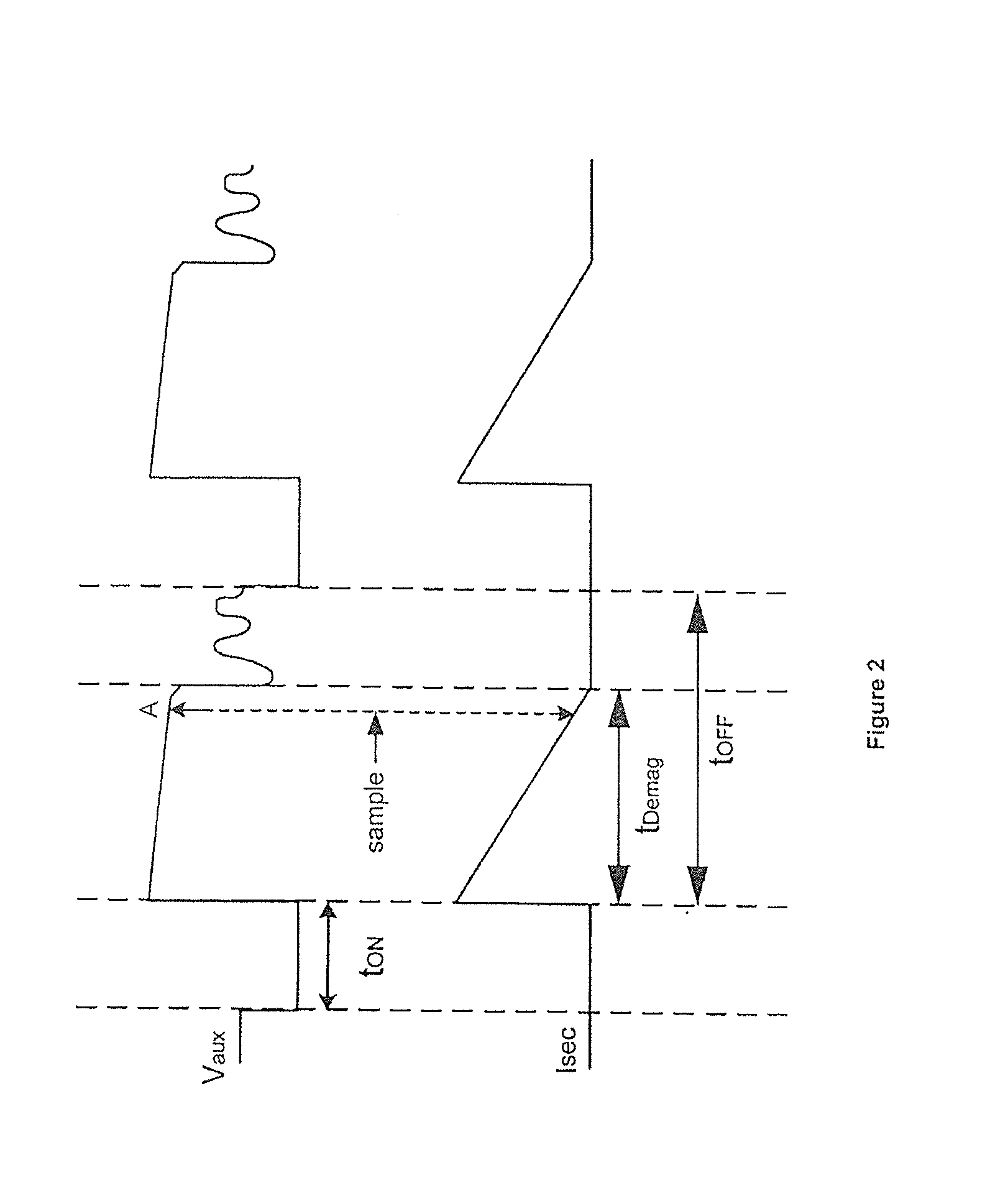Systems and methods for flyback power converters with switching frequency and peak current adjustments based on changes in feedback signals
a technology of switching frequency and peak current, applied in the field of integrated circuits, can solve the problems that the power conversion system b>100/b> often cannot provide effective response to output loading change, and achieve the effects of increasing modulation frequency, increasing modulation frequency, and decreasing modulation frequency
- Summary
- Abstract
- Description
- Claims
- Application Information
AI Technical Summary
Benefits of technology
Problems solved by technology
Method used
Image
Examples
Embodiment Construction
[0035]The present invention is directed to integrated circuits. More particularly, the invention provides switching frequency and peak current adjustments in response to loading changes. Merely by way of example, the invention has been applied to a flyback power converter. But it would be recognized that the invention has a much broader range of applicability.
[0036]Referring to FIGS. 1 and 2, information about the output voltage of the power conversion system 100 often is sampled only once every switching period. The switching period is inversely proportional to the switching frequency, which usually is set low at no load or light load conditions to reduce power consumption. But the low switching frequency often leads to poor dynamic response for the power conversion system 100 if the load changes from no load or light load to full load. For example, if the switching frequency is several hundred Hz at no load or light load conditions, information about the output voltage of the powe...
PUM
 Login to View More
Login to View More Abstract
Description
Claims
Application Information
 Login to View More
Login to View More - R&D
- Intellectual Property
- Life Sciences
- Materials
- Tech Scout
- Unparalleled Data Quality
- Higher Quality Content
- 60% Fewer Hallucinations
Browse by: Latest US Patents, China's latest patents, Technical Efficacy Thesaurus, Application Domain, Technology Topic, Popular Technical Reports.
© 2025 PatSnap. All rights reserved.Legal|Privacy policy|Modern Slavery Act Transparency Statement|Sitemap|About US| Contact US: help@patsnap.com



